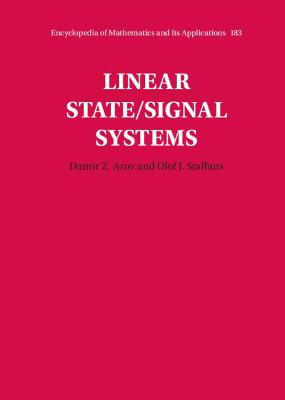Encyclopedia of Mathematics and Its Applications
3 total works
Bitangential Direct and Inverse Problems for Systems of Integral and Differential Equations
by Damir Z. Arov and Harry Dym
Published 31 August 2012
This largely self-contained treatment surveys, unites and extends some 20 years of research on direct and inverse problems for canonical systems of integral and differential equations and related systems. Five basic inverse problems are studied in which the main part of the given data is either a monodromy matrix; an input scattering matrix; an input impedance matrix; a matrix valued spectral function; or an asymptotic scattering matrix. The corresponding direct problems are also treated. The book incorporates introductions to the theory of matrix valued entire functions, reproducing kernel Hilbert spaces of vector valued entire functions (with special attention to two important spaces introduced by L. de Branges), the theory of J-inner matrix valued functions and their application to bitangential interpolation and extension problems, which can be used independently for courses and seminars in analysis or for self-study. A number of examples are presented to illustrate the theory.
J-Contractive Matrix Valued Functions and Related Topics
by Damir Z. Arov and Harry Dym
Published 6 November 2008
J-contractive and J-inner matrix valued functions have a wide range of applications in mathematical analysis, mathematical physics, control engineering and theory of systems and networks. This book provides a comprehensive introduction to the theory of these functions with respect to the open upper half-plane, and a number of applications are also discussed. The first chapters develop the requisite background material from the geometry of finite dimensional spaces with an indefinite inner product, and the theory of the Nevanlinna class of matrix valued functions with bounded characteristic in the open upper half-plane (with attention to special subclasses). Subsequent chapters develop this theory to include associated pairs of inner matrix valued functions and reproducing kernel Hilbert spaces. Special attention is paid to the subclasses of regular and strongly regular J-inner matrix valued functions, which play an essential role in the study of the extension and interpolation problems.
The authors explain in this work a new approach to observing and controlling linear systems whose inputs and outputs are not fixed in advance. They cover a class of linear time-invariant state/signal system that is general enough to include most of the standard classes of linear time-invariant dynamical systems, but simple enough that it is easy to understand the fundamental principles. They begin by explaining the basic theory of finite-dimensional and bounded systems in a way suitable for graduate courses in systems theory and control. They then proceed to the more advanced infinite-dimensional setting, opening up new ways for researchers to study distributed parameter systems, including linear port-Hamiltonian systems and boundary triplets. They include the general non-passive part of the theory in continuous and discrete time, and provide a short introduction to the passive situation. Numerous examples from circuit theory are used to illustrate the theory.


